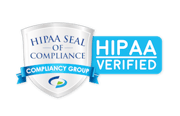When dealing with any terminology domain, to establish a working understanding, you need to get a handle on the anatomy of a term within the domain. For example, if you are looking at a catalog of automobiles you quickly see a pattern that revolves around the vehicle make, model, production year and other characteristics that identify the vehicle to the required level of granularity. Regardless of the domain, the pattern typically becomes broken down into primary characteristics, secondary characteristics and modifiers. The primary characteristic is the core of information that is absolutely essential to the meaning of the term. In other words, if you began stripping off characteristics the primary characteristics is where you say ‘when’ so that the term is not rendered ambiguous in the domain. In our automobile example there are, arguably, a couple of primary characteristics: the make and model. If someone asks you what you drive you typically tell them the make and model (unless the model strongly implies the make or you like bragging about the options package…). The model year, edition and options are secondary characteristics that further define the vehicle and the color and other minutiae could be considered modifiers (unless it is purple).
In the medication domain, the primary characteristic is the list of ingredients, more specifically the list ofactiveingredients. Active ingredients drive the use of medication concepts and, like with the car example, most people when asked about their medications respond with the active ingredients or the brand name synonym for the active ingredients. For medications the implied route, dose form, strength are secondary characteristics that are relevant but not always necessary.
The Inactive Ingredients are Inactive… or ARE they?
Active and inactive ingredients typically both live together in the domain of substances (or ingredients). Whether an ingredient is active or inactive is, in most cases, a role that the ingredient plays as opposed to what the ingredient is. This post is mostly about active ingredients, but it is worth a few minutes to talk about inactive so that, and an implementer, you understand the conceptual differences and the limitations of the notion of an inactive ingredient when you encounter it in the wild.
The difference between an active and inactive ingredient is subtle to the non-pharmacist. Typically the active ingredients are the substances that define the medication, while the inactive ingredients areexcipients介绍了制造业的博士ugproductOR ubiquitous essence of life ingredients like ‘water’ that do not factor into the medications function. If you refer to the medication continuum in the previous post, you will note that inactive ingredients do not participate in the abstract or dispensable generalizations. Since inactive ingredients are, for the most part, introduced by the manufacturing process, any attempt to introduce them into higher level generalizations is risky as it can create false alerts and worse missed alerts (Which is the topic of another post and covered to a small degree in my ‘allergy rule of thumb’ post).
Some may argue that if an inactive ingredient is present in all manufactured forms of a drug you can represent is at a higher level generalization for that particular situation. I would argue that stretching rules of the composition of a terminology to accommodate a few exceptions is not worth compromising the terminology’s consistency. You need to know that active ingredients are always active ingredients, diverging from that path leads to the scary woods of unintended consequences.
你可能会遇到看起来像一个不活跃的是什么edient in an active ingredient list. This is either: (A) a valid active ingredient in that particular circumstance, (B) introduced because it is clinically relevant and there is no other way for the terminology to deal with this, or (C) it is junk DNA left over from a bygone era. In any case, you must treat it like an active ingredient: avoid eye contact and sudden movements. This is discussed more later in this post.
Let’s talk about active ingredients.
The Ingredient Set
Everyvalidmedication concept (I am looking at YOU medical devices…) has one or many active ingredients that make up its primary characteristic. This may be referred to as an ingredient set, ingredient list, generic drug or the formulation (ingredient set in the medication concept continuum). In fact, most every drug compendia has a concept that represents this level. This is important as that defines the set of valid active ingredient combinations. Most, if not all, drug concepts in a medication hierarchy point back to this type of concept. These ingredient sets break down into a list of individual ingredients.
Base ingredients
一个成分是可以代表一个基地edient or a variation of a base ingredient. This is significant because a variation of a base ingredient is related to the base ingredient but can have significant differences (which I will not get into here… ask you local pharmacist). To illustrate this, consider the following table of RxNorm ingredients that start with ‘Erythromycin’:
| RXCUI | SAB | TTY | STR |
|---|---|---|---|
| 4053 | RXNORM | IN | Erythromycin |
| 4055 | RXNORM | IN | Erythromycin Estolate |
| 4056 | RXNORM | IN | Erythromycin Ethylsuccinate |
| 24346 | RXNORM | IN | Erythromycin Gluceptate |
| 24347 | RXNORM | IN | erythromycin lactobionate |
| 24351 | RXNORM | IN | erythromycin stearate |
| 236847 | RXNORM | IN | ERYTHROMYCIN STINOPRATE |
In this list you can see the base ingredient of ‘Erythromycin’ and the variations (or different salt forms of Erithromycin in this example). In most cases the variations of a base ingredient are clinical equivalent to the base ingredient and add not additional clinical value other than accurately describing the variation of the ingredient in a specific formulation. Some compendia have only base ingredients, Some have base and variations and some have defined relationships between the variation and the base.
This information can come into play when processing clinical rules so you need to be aware of it. For example a clinical rule may only be attached to the base ingredient so you need to use the relationship from the variation to the base ingredient to activate the rule.
In some situation a ingredient variation may represent something other than a salt form of the base. Here are some examples from RxNorm of non-salt variations:
| RXCUI | SAB | TTY | STR |
|---|---|---|---|
| 352374 | RXNORM | IN | drotrecogin alfa |
| 353106 | RXNORM | IN | drotrecogin alfa (activated), lyophilized |
| RXCUI | SAB | TTY | STR |
|---|---|---|---|
| 797550 | RXNORM | IN | Immune Globulin (Human) |
| 617615 | RXNORM | IN | Immune Globulin Subcutaneous (Human) |
In some cases there may be no base ingredient – only variations:
| RXCUI | SAB | TTY | STR |
|---|---|---|---|
| 17609 | RXNORM | IN | aluminum acetate |
| 89858 | RXNORM | IN | Aluminum carbonate |
| 17610 | RXNORM | IN | aluminum chlorhydrate |
| 46241 | RXNORM | IN | aluminum chloride |
| 17611 | RXNORM | IN | Aluminum chloride hexahydrate |
| 612 | RXNORM | IN | Aluminum Hydroxide |
| 81948 | RXNORM | IN | Aluminum Hydroxide (Gel), Dried |
| 613 | RXNORM | IN | Aluminum Hydroxide Gel |
| 46242 | RXNORM | IN | aluminum magnesium hydroxide |
| 615 | RXNORM | IN | Aluminum Oxide |
| 17618 | RXNORM | IN | aluminum phosphate |
| 54989 | RXNORM | IN | aluminum potassium sulfate |
| 543375 | RXNORM | IN | Aluminum Sesquichlorohydrate |
| 17621 | RXNORM | IN | aluminum sulfate |
As an implementer, an awareness of the nature of base ingredients and there variations is useful as it can motivate you to look at the data in different ways, both in terms of development and validation.
When is an Ingredient not an Ingredient?
Every now and then you may encounter an ingredient that is present in an ingredient set that is not an ingredient. You will recognize this because under certain situations they will wreak havoc. Sometimes it will be an inactive ingredient, as discussed earlier, and other times it may be a clinical work-around.
An example could be an ingredient set that has ‘water’ and an active ingredient. If the user happens to select that drug (either by picking the ingredient set or the brand name synonym) to represent an allergen, they have unwittingly indicated that the patient is allergic to any ingredient set that includes ‘water’.
Another example of a clinical work-around is a ingredient term that represents a concept like ‘sugar-free’, ‘alcohol-free’ or ‘Preservative-Free’. These were introduced to support firing significant clinical alerts without requiring existing terminology users to re-program their applications. In that respect they are ingenious and likely saved patient’s lives. The unintended consequence of this, like with the water example, is that if a ingredient set with a ‘freeness’ ingredient is used as an allergen it introduces the notion that the patient is allergic to everything else that is ‘sugar-free’. There are not many of these but if you encounter one you should make sure that you have exceptions in your allergy checking to ignore ‘free-ness’-based hits.
Finally, some ingredient terminologies may include the notion of a route of administration in an ingredient (see the above example of 'immune globulin' in RxNorm) this is less of an issue because the route is not typically represented as a distinct ingredient, so the net result is similar to a variation of a base ingredient. Sometimes in these cases the routed ingredient may be disconnected from the base ingredient for clinical reasons.
Ingredients Drive Medication Terminologies
Every use model for medication terminologies is driven by the ingredients. Take some time, with whatever terminology you have chosen for your implementation, to understand how the ingredients work and how they factor into the decision support modules. Understanding this facet of you medication providers content will provide significant insight into how everything else works.
In the next post of this series we will cover the secondary characteristics of a medication concept.




